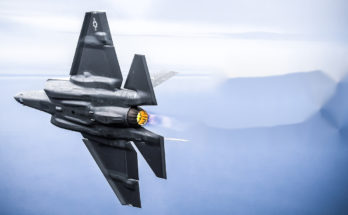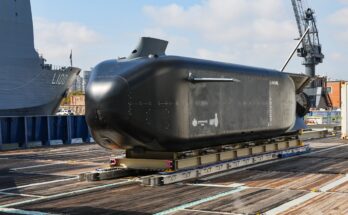by Dan Darling, International Military Markets Analyst, Forecast International.
After years of talk with little to show for it, the governments of Europe are finally moving forward with long-held cooperative defense ambitions through the auspices of the European Union. The announcement by the EU on June 7 of a European Defense Industrial Program co-financed by members to the tune of EUR500-EUR590 million annually through 2020, thereafter growing to EUR1-EUR1.5 billion annually, marks the launch of an effort to bring commonality and unity to an otherwise fragmented market.
Faced with incessant prodding by the Trump administration of the U.S. to bolster military spending and defense capabilities, EU members are now intent on forging ahead in a quest to “take our fate into our own hands,” in the words of German Chancellor Angela Merkel, by creating market efficiencies and, ultimately, a binary defense component that would supplement NATO and act in accordance with EU foreign policy aims where the Alliance is unwilling to act.
The latter has long proven a sticking point for London. In the past, anything representing the creation of a European defense pillar has elicited an automatic stance of opposition by the British, who have viewed such efforts as dilutive to NATO’s role in Europe.
But following last summer’s United Kingdom referendum on exiting the European Union (the so-called Brexit vote), such opposition no longer applies. Instead, British policymakers must now confront the need to plan for the long-term realities of a relationship with Brussels outside the EU and are thus no longer willing to stand in the way.
While European leaders are indeed looking for ways to build greater military integration, there remains a wide distance between this goal and the more ambitious calls by European Commission President Jean-Claude Juncker for a standing European Union Army.
Too many differences still exist at the national level for the latter to emerge any time soon, so for now the path toward a more independent European defense element is being paved through a mechanism called Permanent Structured Cooperation, or PESCO.
Currently, the fractured EU defense market results in the armies of its respective member states utilizing some 178 main weapons systems, as opposed to just 30 in the U.S. military. Furthermore, insufficient funding and poor approaches to military investment render EU partners largely impotent in their ability to project hard power at distances beyond Europe’s immediate periphery. Owing to insufficient interoperability and a lack of necessary equipment, less than 3 percent (40,000 troops) of all European military personnel are considered deployable, while the U.S. military is capable of deploying – and sustaining in the field for long durations – up to 200,000 troops on military operations abroad.
The harsh reality is that EU-wide levels of defense resources at the national level (many budgets are just now returning to pre-2009 topline nominal levels) are poorly spent in terms of meeting the twin goals of creating bloc-wide synergies of capability and economies of scale.
This is hardly a recipe for rebuilding Europe’s atrophying military edge, particularly when combined EU defense spending amounted to just over $200 billion last year – some of which includes funding for individual member state military pension obligations, while leaving out both British and French military pensions (the latter of which would push the total up to about EUR227 billion).
Freed by Brexit and faced with an evolving security environment that includes a transactional-oriented U.S. administration and revanchist Russia on its doorstep, EU leaders have agreed to move forward on a European Defense Fund. The fund will provide members with a multinational initiative allowing them to pool resources to achieve greater outputs and develop capabilities together that would prove untenable at the national level. While the new fund is not intended as a substitute for unitary investment, it does provide a means to jointly finance development projects.
The European Commission notes in its Fact Sheet released on June 7 that when combined with individual Member State contributions, the new Defense Fund may generate up to EUR5.5 billion per year in combined investments toward defense research and capability development/hardware procurement post-2020. One important element in creating unity for the initiative is the stipulation that any future project financed by the Defense Fund must be based in at least two EU countries and involve three participants – thus eliminating industrial protectionism as a rationale for blocking the measure.
Such future investment projections are in sharp contrast to the current budgetary environment in which the EU earmarked just EUR25 million in its fiscal year 2017 budget for joint defense research.
It also fulfills ambitions of EU members to begin paving the way toward a mutual defense framework through which EU-only members such as Sweden and Finland may cooperate with dual EU-NATO members on a European level. Together with the creation of a small joint headquarters to oversee “non-executive” EU military missions, the new Defense Fund represents a necessary step toward building this mutual defense framework.
Perhaps most importantly for EU members, it represents a step toward meeting the vociferous demands of the Trump White House to increase and improve Europe’s financial and material military obligations. And, in the event EU leaders feel the need to act militarily outside of NATO, they are laying the foundation to do so.
Meanwhile, critics of Trump’s approach to the trans-Atlantic alliance may look upon this as a warning to be careful what you wish for. Yet regardless of the at-times truculent stance assumed by this president toward the European members of NATO, the truth is that a smarter approach by Europe toward building a stronger defense infrastructure is a benefit for both sides. The odds are that NATO will still be the central pillar for European security and that the EU will remain without a standing army long after this president is out of the White House.
Please feel free to use this content with Forecast International and analyst attributions, along with a link to the article. Contact Ray Peterson at +1 (203) 426-0800 or via email at ray.peterson@forecast1.com for additional analysis.
The Forecast International International Military Markets series examines the military capabilities, equipment requirements, and force structures inventories of 140 countries, with corresponding coverage of the political and economic trends shaping the defense market outlook for individual countries and regions.
For 50 years, Forecast International intelligence reports have been the aerospace and defense industry standard for accurate research, analysis, and projections. Our experienced analysts compile, evaluate, and present accurate data for decision makers. FI's market research reports offer concise analysis of individual programs and identify market opportunities. Each report includes a program overview, detailed statistics, recent developments and a competitive analysis, culminating in production forecasts spanning 10 or 15 years. Let our market intelligence reports be a key part of reducing uncertainties and mastering your specific market and its growth potential. Find out more at www.forecastinternational.com



